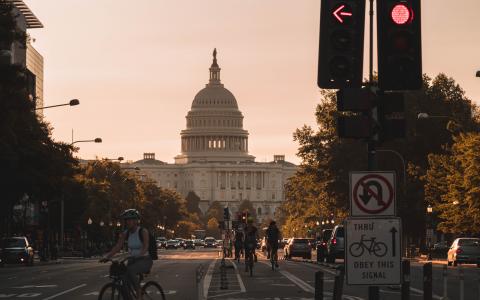
The coming question is what should be done once the coronavirus crisis abates and the kick wears off from Washington’s rescue efforts.
For answers, we should—but won’t—heed some of the key lessons of the 1920–1921 depression. After World War I, the U.S. experienced a torrid inflationary boom. But the bubble burst, especially after the Federal Reserve sharply raised interest rates. The economy crashed, and unemployment soared to around 20% (recordkeeping in those days was haphazard).
How did the federal government react? As recounted in James Grant’s definitive history of that contraction, The Forgotten Depression—1921: The Crash That Cured Itself, Washington did the opposite of what economists would counsel today. Spending was slashed from wartime levels; taxes were cut; regulations that had been piled on during the conflict were lifted; and nationalized companies, primarily railroads and telephone companies, were returned to their rightful owners. The dollar was not devalued. The economy quickly rebounded. We were soon at full employment, and the Roaring ’20s were underway. The U.S. experienced one of the most innovative eras in its history.
Washington’s reaction to the Great Depression a decade later was a study in contrast: Spending sharply increased, taxes rose, numerous new bureaucracies were created and businesses were deluged with a flood of new rules and constantly harassed by regulators. Hard times continued, and real recovery didn’t come until after World War II.
In fact, the whole catastrophe was brought on by activist governmental errors. In 1929 the new president, Herbert Hoover, wanted to do something for hard-pressed farmers, and he thought tariffs on agricultural imports would do the trick. Congress, acting like pigs in a feeding frenzy, raised taxes enormously on thousands of imported items. As the legislation made its way through Congress, the stock market—which reacts to future prospects—cracked. When Hoover signed the Smoot-Hawley Tariff Act, other countries retaliated, sparking an international trade war. Economies, here and overseas, began to shrink. Hoover responded with unprecedented government activism. His successor, Franklin Roosevelt, pushed through even more interventions. The crisis persisted.
After WWII, fear of a renewed downturn led many to cry for more Hoover/FDR-like policies. Instead, we did the opposite: The budget was ruthlessly axed, income taxes for couples were effectively halved, wartime controls were rapidly eliminated, the New Deal’s anti-commerce labor laws were modified and the dollar remained fixed to gold. Even though millions of veterans rapidly returned to the workforce, unemployment remained low.
We must take these experiences to heart. Large, across-the-board tax cuts should be enacted and our progressive tax system replaced by a flat tax. The dollar’s value should be stabilized, preferably by rediscovering Alexander Hamilton’s wisdom and fixing our currency to gold. The commerce-crunching provisions of all COVID-19 rescue bills should be allowed to expire or be removed. Deregulation efforts should be renewed.
It’s simple. As Nathan Lewis demonstrates in The Magic Formula, economies that have low tax rates and stable currencies prosper more than those that don’t. Always.
This article originally appeared on Forbes.



